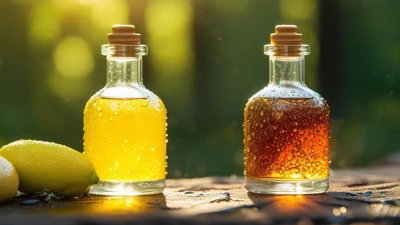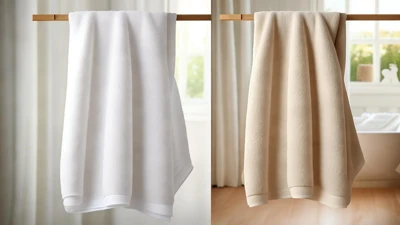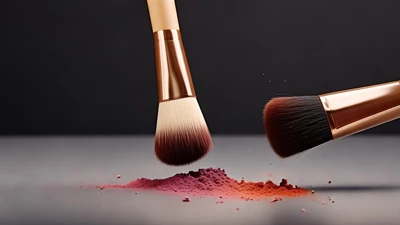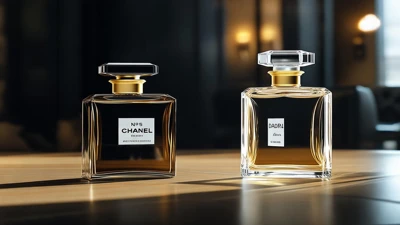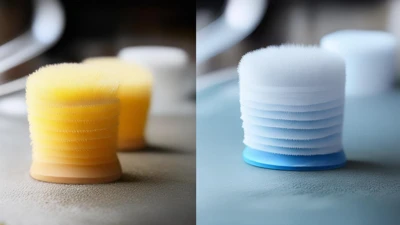
Citrus or Woody? A Comprehensive Summer Scent Guide.
This Is the Introduction. The Debate Goes On Forever.
Aromas of summer are a sensory battleground. The zesty brightness of citrus meets the grounding depth of wood. The selection of these scents is not simply a matter of personal choice. It reflects traditions, mindsets, and day-to-day realities. This essay explores the rivalry from scientific, cultural, and personal perspectives, using case studies and sensory data to address a timeless question: Which scent profile is superior in the heat?
I.Traits of the Competing Parties. The Nature of Their Bond.
A.Citrus Scents: The Zest of Nature.
Fruits such as bergamot, lemon, and grapefruit provide the cold-pressed oils used in citrus fragrances. The rapid evaporation of terpenes and limonene creates a sudden wave of freshness. Acqua di Parma's Colonia was first launched in 1916. Its signature crispness comes from combining Sicilian lemon with Calabrian bergamot. These fragrances are naturally connected to summer because they are linked to freshness and energy.
B.Earthy Sophistication in Woody Scents.
Sandalwood, cedar, and vetiver define the character of woody profiles. Sesquiterpenes, being heavier molecules, contribute to their lingering effect on the skin. Tom Ford's Santal Blush combines Australian sandalwood and spicy cinnamon. The result is a warm, enveloping dry-down that fits perfectly into this category. Historically connected to sacred rites and inner focus, such perfumes highlight steadfastness and poise. Their grounding effects might not align with the exuberant chaos of summer activities.
II.The cultural aspect and the historical situation.
A.Citrus Embodies Regeneration.
For Mediterranean communities, citrus means hospitality and energy restoration. Majmua attar is a blend of citrus and floral scents. It has been used in India for centuries in Ayurvedic practices to combat heat-induced fatigue. In the 19th-century American South, Florida Water cologne gained popularity. Its formula included citrus oils and lavender. These ingredients aimed to give the wearer a feeling of coolness.
B.The Essence of Wood: Rituals and Resilience.
Many traditions consider woody aromas to be sacred. Fragrances with oud, including Amouage's Interlude Man, remain a constant choice in the Middle East. Their complexity grows when the air is humid in the summer. Hinoki wood incense is burned in summer tea ceremonies in Japan for mental harmony. It demonstrates how wood notes adapt to seasons via cultural context.
III.Effects on Mental and Physical Health.
A.Citrus: How Science Brings Cheer.
In 2014, researchers discovered that breathing in lemon oil could reduce cortisol levels by 30%. This study was featured in the Journal of Alternative and Complementary Medicine. Citrus contains highly volatile compounds. These compounds stimulate the trigeminal nerve and trigger alertness. Jo Malone's Lime Basil & Mandarin sells well in tropical regions like Singapore. Humidity amplifies how refreshing it feels.
B.Woody Notes Offer Comfort When It's Hot.
According to research published in the International Journal of Neuroscience, sandalwood's alpha-santalol can increase theta brain waves and promote relaxation. Inspired by the forests of Vietnam, Diptyque's Tam Dao EDT uses cedar and cypress to produce a 'cooling canopy' effect, providing comfort in high temperatures.
IV.Key Points to Remember During Summer.
A.Longevity and Versatility.
The volatility of citrus scents makes them well-suited for the daytime heat, yet it also shortens their longevity. To address this, Creed's Aventus Cologne uses a pineapple-bergamot combination. Oak moss base notes ensure the fragrance lasts longer. Summer evenings bring out the best in woody fragrances. Once the sun sets, Le Labo's Santal 33 intensifies. The creamy sandalwood scent harmonizes with the cooler temperatures.
B.How Sustainability Affects Skin Chemistry.
Applying bergamot oil without protection from the sun can lead to pigmentation. This is due to its phototoxic nature, common among citrus oils. This problem is managed by brands like L'Occitane. They ensure their Verbena products contain bergapten-free bergamot. Woody scents often require sandalwood from endangered species. This fact is now being ethically challenged. Nasomatto's Baraonda achieves this through synthetic sandalwood accords, blending luxury with sustainability.
V.Market Trends and Consumer Choices Explored in Case Analyses.
A.The Western market is heavily influenced by citrus fruits.
Dior's Sauvage, known for its citrus-aromatic scent, was named the top men's fragrance globally in 2023. Sales during June to August accounted for 18% of the total. A marketing narrative linking 'wild freshness' to summer fun is crucial for its success.
B.High-end sections featuring wood aesthetics.
Niche fragrances see 40% of their sales in the Middle East. Amouage's Rose Incense is particularly sought after during Ramadan summers. This shows a cultural inclination towards rich, enduring fragrances that last through the seasons.
VI.Seasonal Musings: Embracing Two Sides.
As someone who switches between Chanel's Eau de Cologne (citrus) and CdG's Incense: Avignon (woody), my choice depends on the situation. The zesty citrus mist in the morning prepares me for sun and sand. The earthy wood tones at night connect me to tranquility. Just like summer: radiant and dynamic, but fleeting in nature.
VII.Finally, we aim to synchronize the separation.
The citrus-woody debate can allow for a spectrum of possibilities. Today's perfumes regularly mix unexpected combinations. Byredo's Super Cedar features rose alongside cedar. Hermès' Terre d'Hermès highlights grapefruit with vetiver. The glory of summer is capricious, and it demands adaptability. Citrus embodies its fleeting happiness; woody tones preserve its enduring warmth. Perhaps the best summer scent comes from embracing both aspects.







